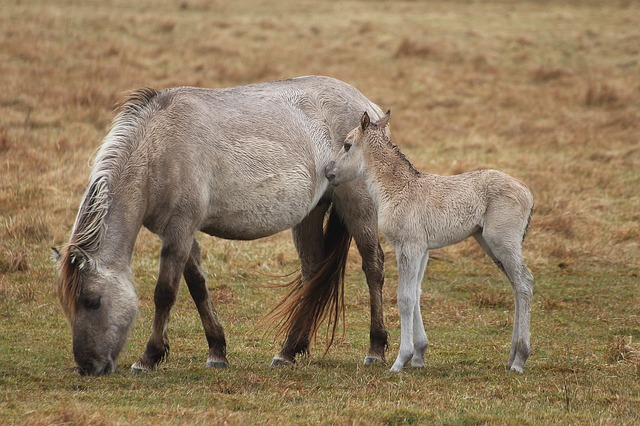The Society of Vertebrate Paleontology is thrilled to announce that a pregnant horse skeleton found in Germany contains the oldest (and best preserved) example of a vertebrate foetus known to man. Not only is the tiny fossil almost entirely present and accounted for in terms of its many delicate bones, but some soft tissues survived the past 48 million years.
As noted by Discovery News, the horse – technically a horse ancestor, from the species Eurohippus messelensis – died just before giving birth. While unfortunate for her, this gave modern science an unprecedented look into prehistoric uterine development and tissues. Gross? Maybe. Fascinating? Without a doubt. The foetus confirms that this ancient species of pre-horse, despite its short stature and multi-toed feet, gave birth remarkably similarly to its modern-day counterpart.
Scientists have been able to use imaging technology to reconstruct the foetus as it might have looked, had it survived birth. The LA Times reports that this is only the second fossil uterus ever found – even fully grown fossil mammals generally yield nothing more than a few scattered bone fragments. Consider that Eurohippus messelensis stood a grand total of 12 inches tall at its adult height, and the fact that this fossil is so beautifully intact becomes even more impressive.
The horse predecessor did not die in childbirth, and so its foetus and uterus were perfectly preserved.
How was this animal and its unborn foetus so well-preserved? Scientists say that the specimen was recovered from a former shale quarry, what was once a freshwater lake. Bacteria in the lake combined with iron in the water to preserve the skeletons of any animal unlucky enough to stumble in and drown, which also suggests that our pregnant friend did not die of complications related to the birth itself. We also have bacteria to thank for the soft tissue traces that remain on the foetus, as they essentially ‘petrified themselves’ around the tissue.
All in all, this find is a great day for paleontological enthusiasts and anyone interested in how much 50 million years can change – and how much stays the same. Some animals even look almost identical to their present-day counterparts!
























